Abandon Ship – What to Have When Getting That Sinking Feeling
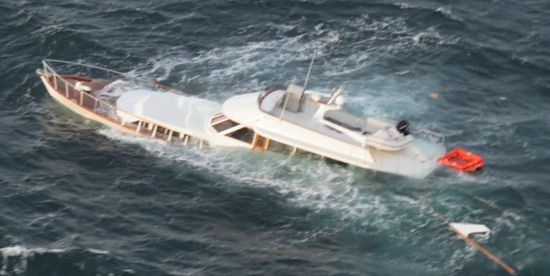
Having and maintaining a comprehensive ditch bag can save lives. The U.S. Coast Guard requires that there be a properly fitting life jacket for every sole onboard as well as a throwable personal floatation device and a fire extinguisher. According to the size of the boat, other safety devices such as flares may be required. However, these items represent the minimum for onboards safety devices and are often not enough. Keeping and maintaining a ditch bag onboard may be one of the most important ways to remain safe when the situation gets really serious. Here are some tips on what any boater should have and maintain in their ditch bag.

Make a List. There’s an endless list of what should go into a ditch bag, but there are other realities to consider as well. Where will you store a giant bag onboard? How often will you check its contents to make sure all is up-to-date and working? How much room would it take up in a life raft? Is it too heavy for the smallest of the crew to carry?
Quantities will vary with the crew size and cruising grounds, but consider these items a start.
Safety Equipment Checklist
At a minimum, this equipment will serve for offshore or extended near-coastal cruising.
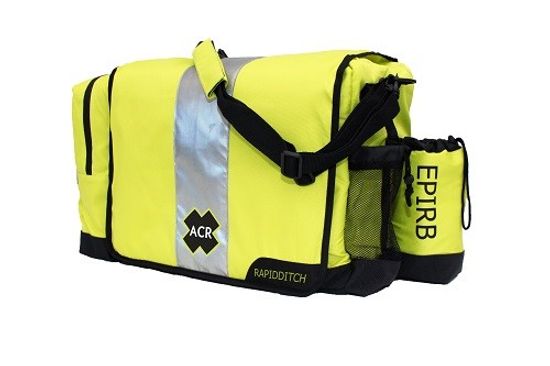
EPIRBs and PLBs help locate a vessel or crewmember in distress. (These devices interface with the worldwide service of COSPASS-SARSAT, the international satellite system for search and rescue (SAR). Registration is free and there is no subscription or annual fee for either.)
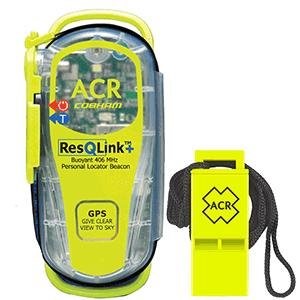
ACR Rescue
The ACR ResQLink is among our favorite life-saving devices. Search and rescue will come a lot quicker when you have one of these devices.
Life Rafts & PFDs
Life rafts - Keep you afloat, out of the water and visible.
PFD - Just keeps you afloat but not out of the water. Make sure it includes a whistle and reflective SOLAS tape.
TSO’d Life Raft
When choosing a life raft, get the biggest you can afford and fit on the boat. You will come to appreciate size when the life raft is all you have.
Signaling Equipment
Flares – The Coast Guard has rules on types/colors to carry depending on vessel size and use.
Lights – Fixed or strobe
Fog horn – Air pressure or the kind you blow in
Whistle – Preferably attached to PFD
Mirror – For daytime signaling
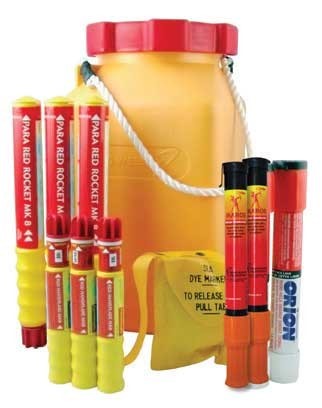
SOLAS - The International Convention for the Safety of Life at Sea (SOLAS) is an international maritime treaty which sets minimum safety standards in the construction, equipment, and operation of merchant ships.
Marine Flares
Marine flares are the first choice for signaling and are the most recognizable. Make sure they are not expired. Expired flares will not light.
Electronics/Communications
Handheld and fixed VHF – Waterproof
Handheld and fixed GPS – For reporting location
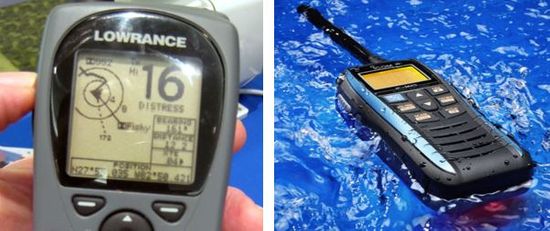
VHF Radio
A VHF is the critical choice for communicating. Several models include a GPS. If it includes a GPS it will also include DSC (Digital Selective Calling) so you can transmit a call for help as well as your position with the press of a button.
Complete List of Suggested Items.
Ditch Bag – Waterproof
EPIRB – Emergency Position Indicating Radio Beacon
PLB – Personal Locator Beacon
VHF radio – Waterproof, handheld and DSC capable with an extra battery
GPS – Waterproof, handheld with alkaline batteries (there are VHF, GPS combo units)
Locator Light – Waterproof and preferably a strobe light
Dry bag – Make that more than one
Space blanket – Reflective is best for heat/cold and signaling
Duct tape – toss in some thin wire or twist ties too
Multi-tool - And/or knife
Length of extra line – 50 feet at least
Flashlights and headlamps – Waterproof and preferably LED
Chemical light sticks – Break them to activate
Sunglasses – And extra prescription glasses
Sponges and a towel – Sitting in water guarantees saltwater sores
Water container – Plastic or metal
Water bottles – Supplement the life raft supply
Food – Freeze dried and/or energy bars
Medical kit – As much as you can pack
Medications and supplements - Including personal and seasickness meds
Sunscreen and lip balm – Especially important for life rafts with no tops
Flares - Handheld and aerial
Whistle or air horn – Your voice will be a poor substitute
Signal mirror – Make sure it has a lanyard
Sea dye – SOLAS-grade to mark your spot
Identification – copies of passports, driver’s license, and ship’s papers
Instructional book - Captain’s Guide to Life raft Survival is a good one
Fishing supplies – At least line and hooks
Funnel – To capture any condensation for drinking water
Trash bags – Good for keeping gear together and dry
Bail bucket – Also for a variety of uses including a toilet
Toilet paper – Don’t laugh, have you thought of life without it?
There’s an old saying that says chance favors the prepared. If caught in a disaster without any preparation, chances of survival diminish drastically. Look at it this way: Is it better to be stuck in the water after the boat sank with a simple VHF, or be relegated to waving arms? The more equipment on hand to prepare for an emergency, the more emergencies one will be prepared to deal with.